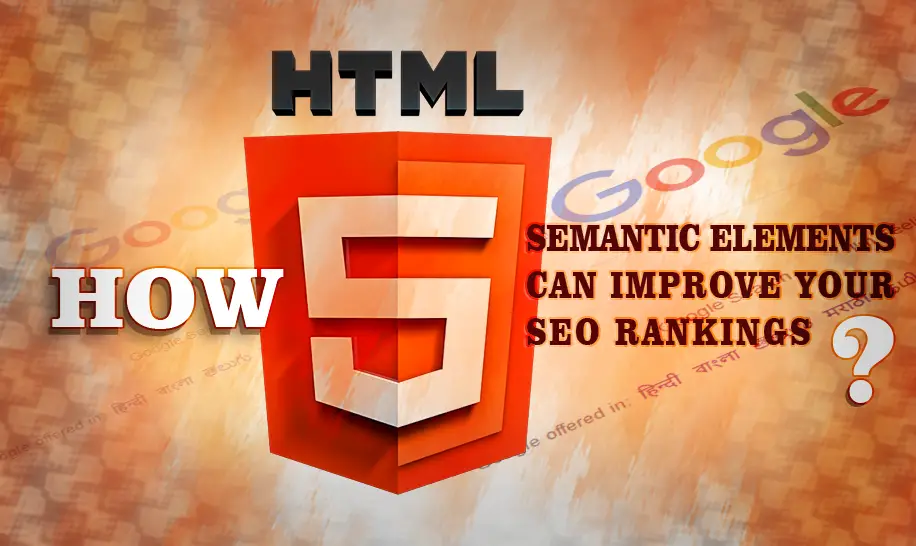HTML5 Semantic Elements have become an important factor in improving SEO rankings due to their ability to provide search engines with more meaningful information about the content of a webpage. These elements go beyond just adding structure to a webpage, they play a crucial role in enhancing the relevance and context of the content for search engines. In this article, we will discuss how HTML5 Semantic Elements can positively impact your SEO rankings and provide practical examples of how to optimize your website using these elements.
What are HTML5 Semantic Elements?
HTML5 introduced a set of new semantic elements that help describe the structure and content of a webpage more accurately. These elements carry more weight in terms of SEO than non-specific tags such as div or span because they provide additional context about the content.
Some of the most commonly used semantic elements include:
- <header> – Represents the introductory content of a webpage or section.
- <nav> – Defines a set of navigation links within a webpage.
- <article> – Defines self-contained content, such as blog posts or news articles.
- <section> – Represents a thematic grouping of content within a webpage.
- <aside> – Contains content that is indirectly related to the main content on the page, like sidebar widgets or advertising.
- <footer> – Represents the footer of a webpage or section, typically containing information like contact details or copyright notices.
How do HTML5 Semantic Elements improve SEO rankings?
By using semantic elements, you can provide search engines with clearer signals about the structure and meaning of your webpage content. This clarity helps search engines understand your content better and improves the relevancy of your site in search results.
Here's how semantic elements contribute to SEO:
- Enhanced Crawlability: Search engines use crawlers to navigate and index webpages. By using semantic elements, you make it easier for these crawlers to understand your site's structure and hierarchy, resulting in better indexing.
- Improved Relevancy: Search engines strive to provide the most relevant results for user queries. Semantic elements help search engines recognize the main content and the supporting information of a webpage, making it easier for search engines to determine the relevance of your site.
- Rich Snippets: Semantic elements can be used alongside structured data markup such as Schema.org to create rich snippets. Rich snippets give search engines additional information about your content, which can be displayed in search results, attracting more clicks and improving your SEO visibility.
Practical examples of HTML5 Semantic Elements optimization:
Now that we understand how semantic elements impact SEO, let's explore ways to optimize your website using these elements:
Optimizing the Header:
The <header> element should contain the most important introductory content. Ensure that the heading tag (<h1>) within the <header> is relevant to the overall content of the page, and use appropriate subheadings (<h2>, <h3>, etc.) to structure the content within the <header>.
Semantic Navigation:
Wrap your main navigation within the <nav> element. Use descriptive anchor text and include relevant keywords to provide context to search engines. Additionally, consider implementing breadcrumbs to enhance navigation and structure on your site.
Organizing Content with <article> and <section>:
Use the <article> and <section> elements to group related content. For example, if you have a blog post, wrap the entire post within the <article> tag. Break down the content into different sections using the <section> element, making it easier for search engines to understand the hierarchy and structure of your content.
Supporting Content with <aside>:
If you have any content that is indirectly related to the main content, such as advertisements or sidebar widgets, wrap it within the <aside> element. This helps search engines distinguish between primary content and supporting content.
Optimizing the Footer:
The <footer> element should contain relevant information, such as copyright notices, contact details, and links to important pages. Use proper heading tags to structure the content within the <footer>, making it easier for search engines to understand the context.
Conclusion:
HTML5 Semantic Elements provide a powerful way to improve your SEO rankings by giving search engines a better understanding of your webpage's structure and content. By optimizing your website using semantic elements, you enhance crawlability, improve relevancy, and increase the chances of appearing as a rich snippet in search results. Implementing these elements requires careful consideration of your content and proper structuring, but the long-term benefits in terms of SEO are worth the effort.











